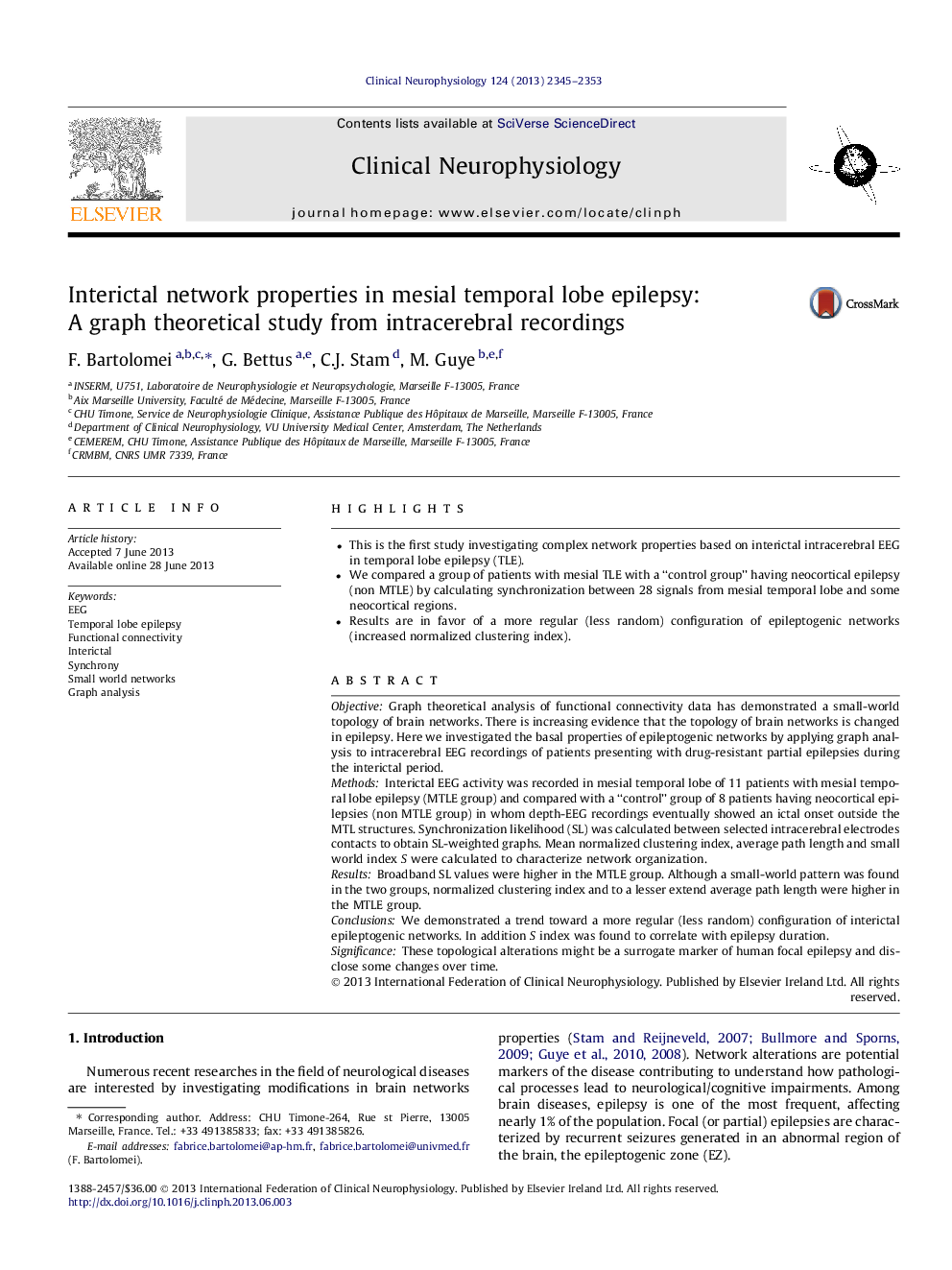| Article ID | Journal | Published Year | Pages | File Type |
|---|---|---|---|---|
| 3044211 | Clinical Neurophysiology | 2013 | 9 Pages |
•This is the first study investigating complex network properties based on interictal intracerebral EEG in temporal lobe epilepsy (TLE).•We compared a group of patients with mesial TLE with a “control group” having neocortical epilepsy (non MTLE) by calculating synchronization between 28 signals from mesial temporal lobe and some neocortical regions.•Results are in favor of a more regular (less random) configuration of epileptogenic networks (increased normalized clustering index).
ObjectiveGraph theoretical analysis of functional connectivity data has demonstrated a small-world topology of brain networks. There is increasing evidence that the topology of brain networks is changed in epilepsy. Here we investigated the basal properties of epileptogenic networks by applying graph analysis to intracerebral EEG recordings of patients presenting with drug-resistant partial epilepsies during the interictal period.MethodsInterictal EEG activity was recorded in mesial temporal lobe of 11 patients with mesial temporal lobe epilepsy (MTLE group) and compared with a “control” group of 8 patients having neocortical epilepsies (non MTLE group) in whom depth-EEG recordings eventually showed an ictal onset outside the MTL structures. Synchronization likelihood (SL) was calculated between selected intracerebral electrodes contacts to obtain SL-weighted graphs. Mean normalized clustering index, average path length and small world index S were calculated to characterize network organization.ResultsBroadband SL values were higher in the MTLE group. Although a small-world pattern was found in the two groups, normalized clustering index and to a lesser extend average path length were higher in the MTLE group.ConclusionsWe demonstrated a trend toward a more regular (less random) configuration of interictal epileptogenic networks. In addition S index was found to correlate with epilepsy duration.SignificanceThese topological alterations might be a surrogate marker of human focal epilepsy and disclose some changes over time.
